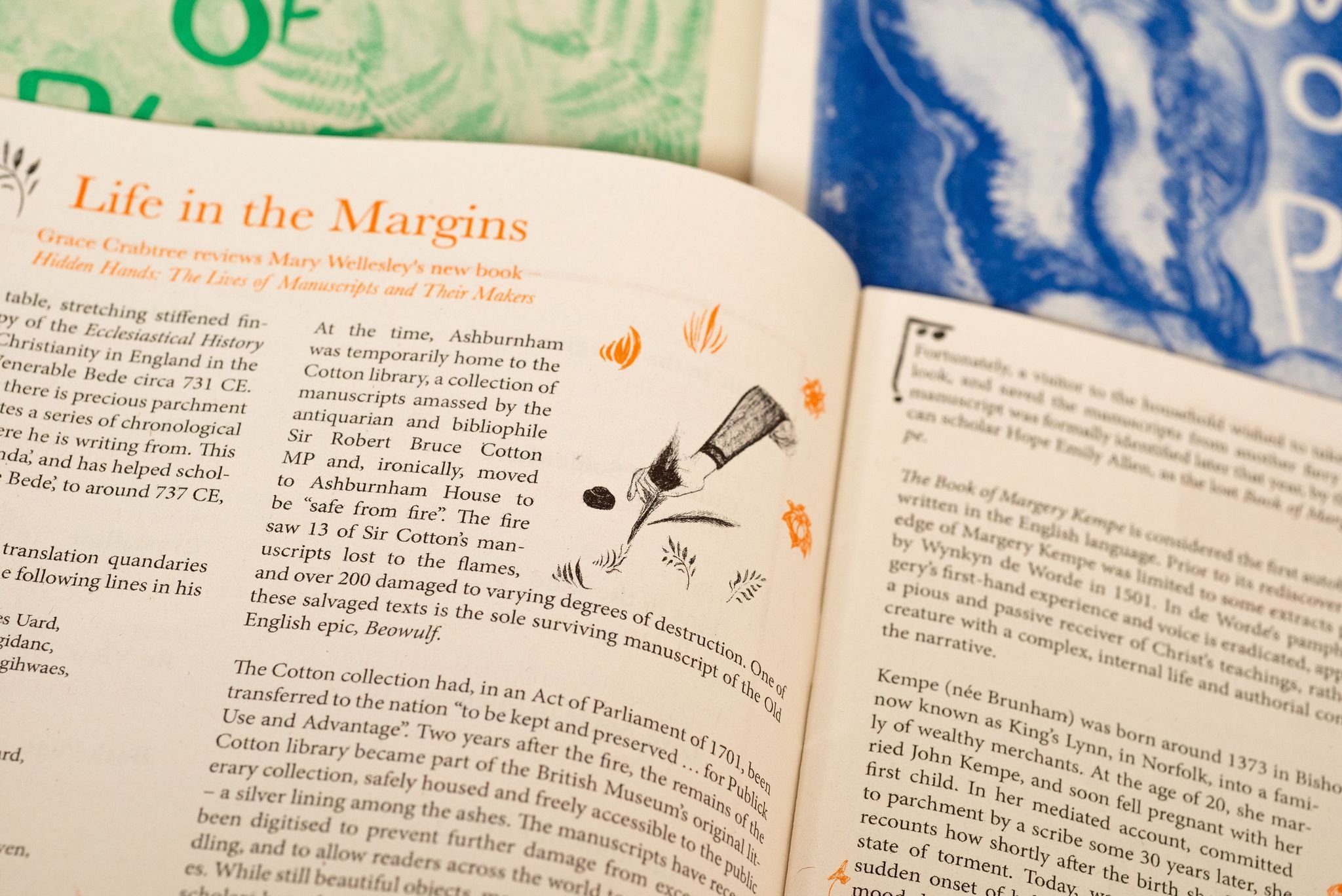
Writing
Beyond the image: Iconoclasm and memory in English medieval wall painting
In Apparitions, Tent Press, Vol. 1
Deep sea star-stones
In Dark Mountain: Issue 26 – Dark Ocean
Thinking in common? Woolf, co-operativism, and the Women’s Guild
“In a journal entry of 1919, Virginia Woolf, recovering from a bed-bound fortnight of ill health and now permitted only an hour’s daily writing, begins a “partial account” of her friends. Among them she counts ‘intellectuals’ like Lytton Strachey and Clive Bell; Rupert Brooke and the Neo-Pagans; artists like Dora Carrington and writers such as Katherine Mansfield and T.S. Eliot. Among this rollcall of names from the Bloomsbury orbit, Woolf ‘inserts’ another group, those “distinguished by their social and political character”, in which she includes the social reformers Beatrice and Sidney Webb, and Margaret Llewelyn Davies, the long-time secretary of the Women's Co-operative Guild. This set, she writes, “runs parallel but does not mix” with the literary set. This exemplifies Woolf’s political engagement: never fully absorbed, instead kept at a slight distance so as to better analyse and pick apart her feelings and experiences, particularly in the pages of her diaries kept from a young age until her death in March 1941. […]”
Shape-shifting: Exploring the cross-cultural, gender-bending goddess of Cyprus
“Cyprus is strewn with archaeological finds, such as tiny, pale green picrolite figurines from around 2000-3000 BC, their bodies cruciform in shape, with pronounced vulvas and pregnant stomachs, as well as long phallus-like necks. Often found in graves, the prevalence of these androgynous objects, and their often pierced heads, suggests they were worn as amulets – “taliswomen-men”, in Hughes’s term. Other finds further complicate our gendered interpretations of a feminine, fertile Great Goddess.”
In Matter Out of Place, Summer 2022
Life on the margins: A review of Hidden Hands: The Lives of Manuscripts and their Makers by Mary Wellesley (2021)
“The scribe sits back from the table, stretching stiffened fingers. The work is complete: a copy of the Ecclesiastical History of the English People, a history of Christianity in England in the Anglo-Saxon era, written by the Venerable Bede circa 731 CE. But with the final words copied out, there is precious parchment yet untouched. […]”
In Matter Out of Place, Spring 2022
The Old Things
On Hemingway, memory, and 'the moveable feast'
“Across religions, feast days of celebration and exultation demarcate the year and serve to elevate quotidian life. A sense of scientific structure emerges through the calendrically-fixed dates, whereas the feast days occurring on a particular day of the week convey more of a sense of ritual; a social understanding of an underlying structure attached to them.
Moving beyond the liturgical meaning, a ‘moveable feast’ in Ernest Hemingway’s use of the term can be used to think about memory and place. […]”
In Matter Out of Place, Autumn 2021
Beyond Their Aspect: Reflecting on the meanings of translation
“The viewer understands the traces of red to represent flowers in a springtime field, yet in their simplified form they recall the stigmata on Jesus’s hands and feet. These signs act somewhat like metaphors, but are unstable and changeable, readily moving between icons, symbols, and association rather than defining or identifying. These signs go on a translatory journey between the invisible, the visible and lisible (readable).”
In Matter Out of Place, Summer 2021
Anachronistic Time: Radical re-encounters with the tradition of mural painting
“Stood before an image, our present is arrested to allow the past to come through; but it also arises, emerges, “born in the experience of the gaze.” Sometimes, something like an awareness of these shifting and fragmentary temporalities can bring about an instance of an anachronistic reading, such as the experience described by the art historian Georges Didi-Huberman of looking at a Fra Angelico fresco, in which he anachronistically sees, in the mottled flecks of red pigment on ground, a Jackson Pollock painting. […]”
In Matter Out of Place, Winter 2020
Improvised Treasures: A review of Brian Dillon's Suppose a Sentence (2020)
“Suppose a Sentence is in part a challenge Brian Dillon set himself, to move “from one fragment to the next” without design, “feeling for the route.” Reading the book – 27 essays on 27 sentences from 27 authors – is like being taken on a guided tour of the fragments: the reader is led on a winding, but sharply incisive, jaunt through the words, the ideas, the anatomy, the flesh, and the “spectral presence” of these sentences. […]”
